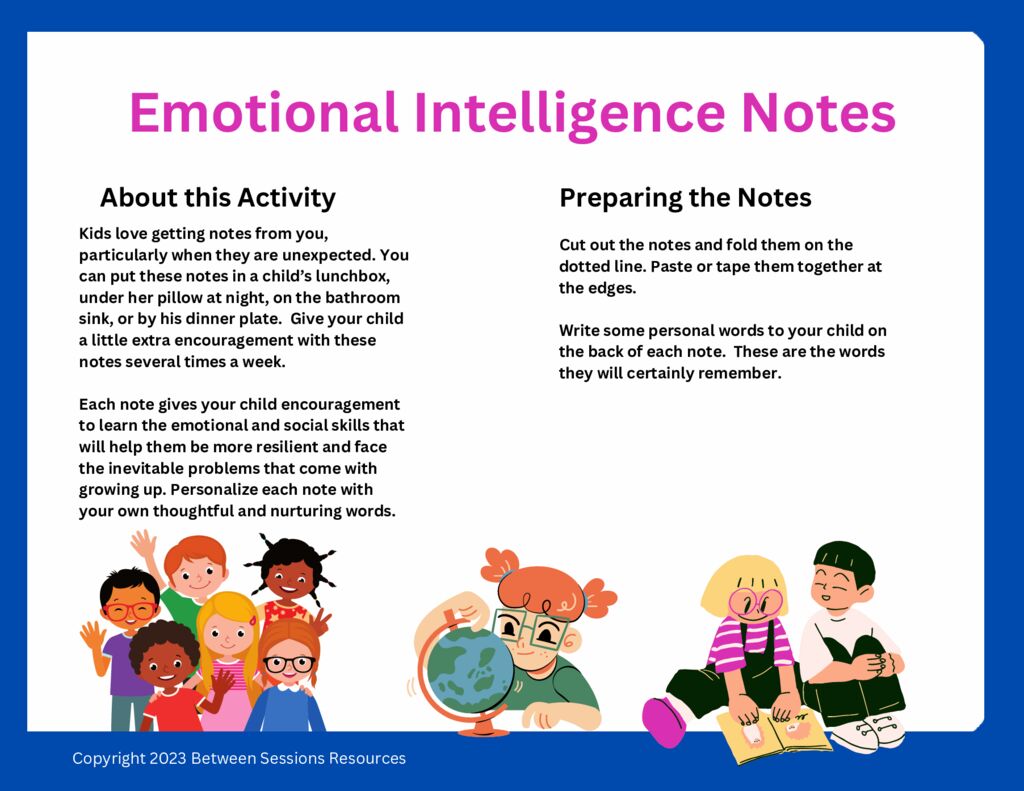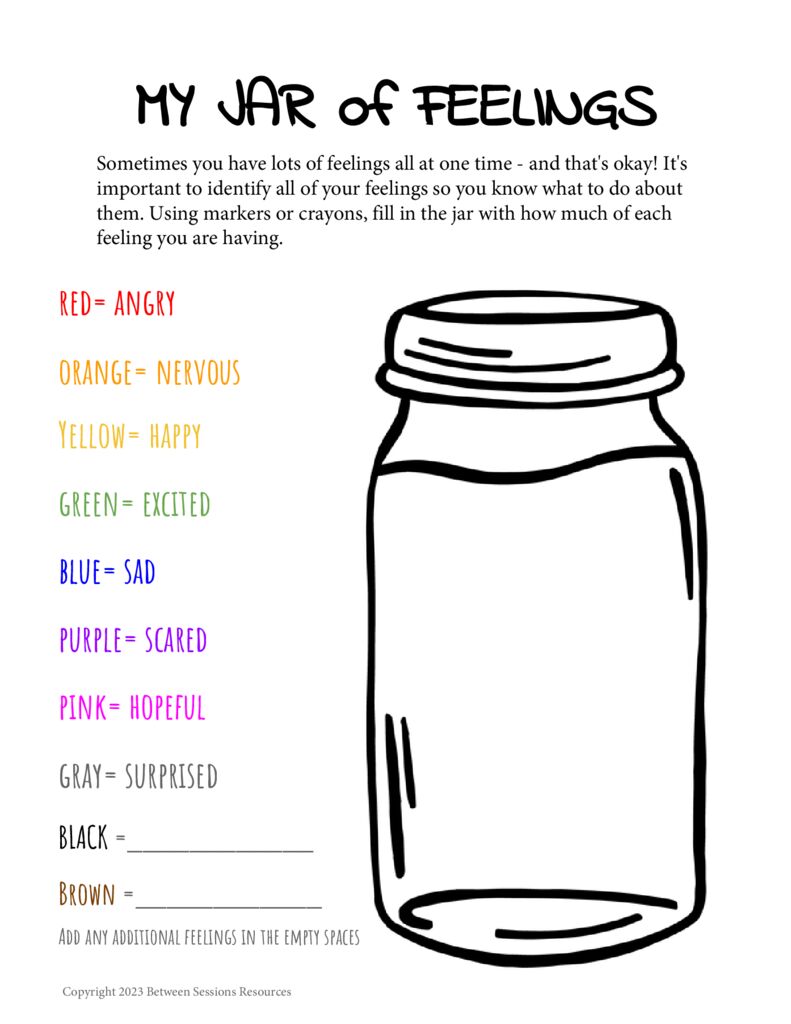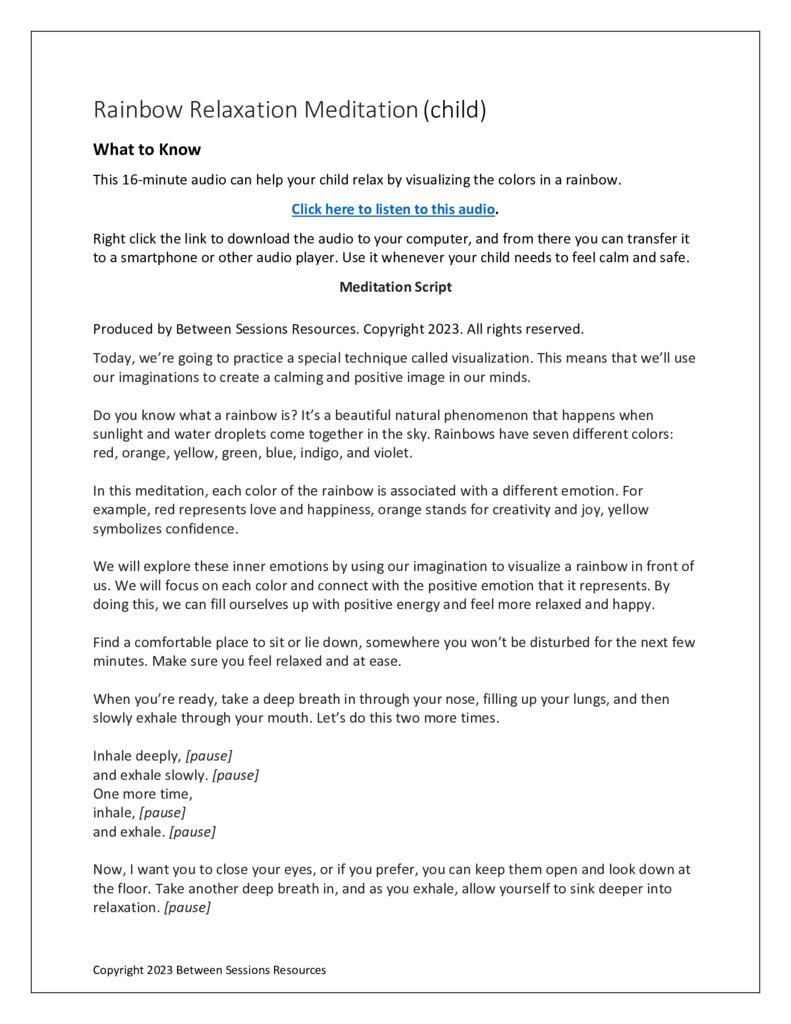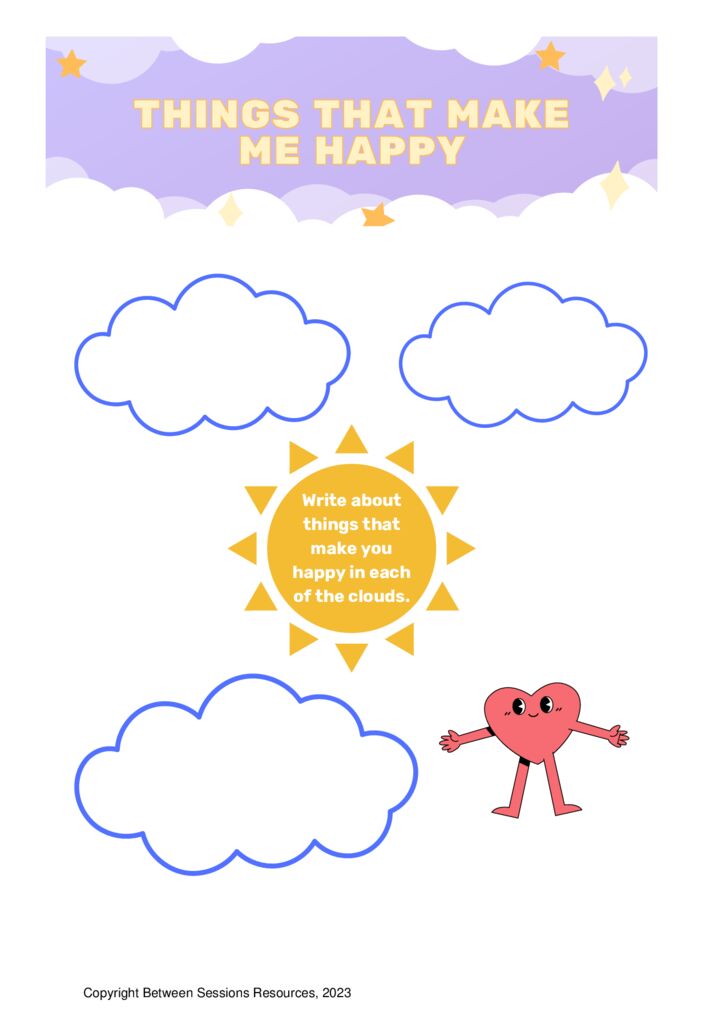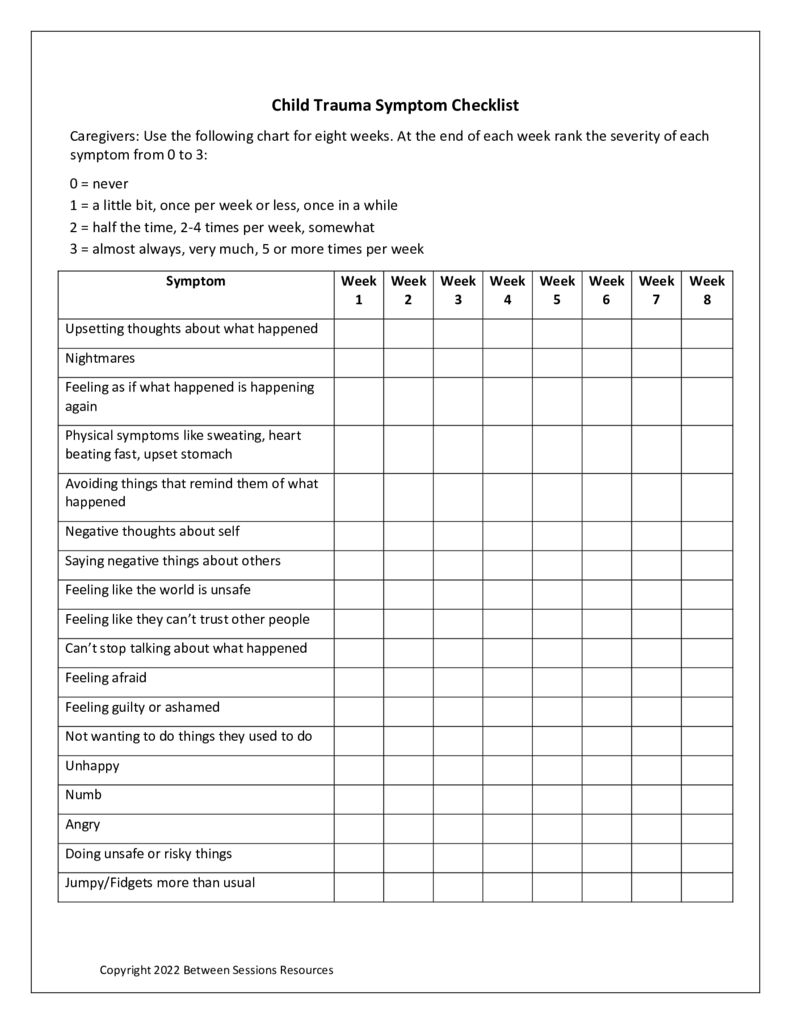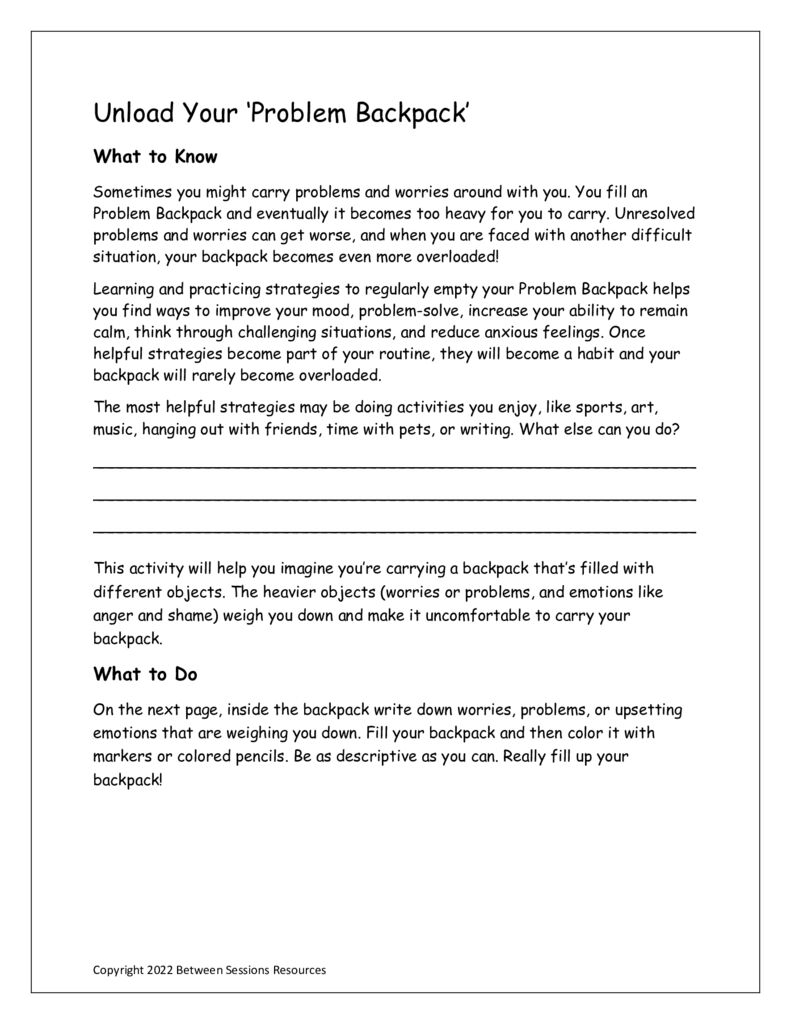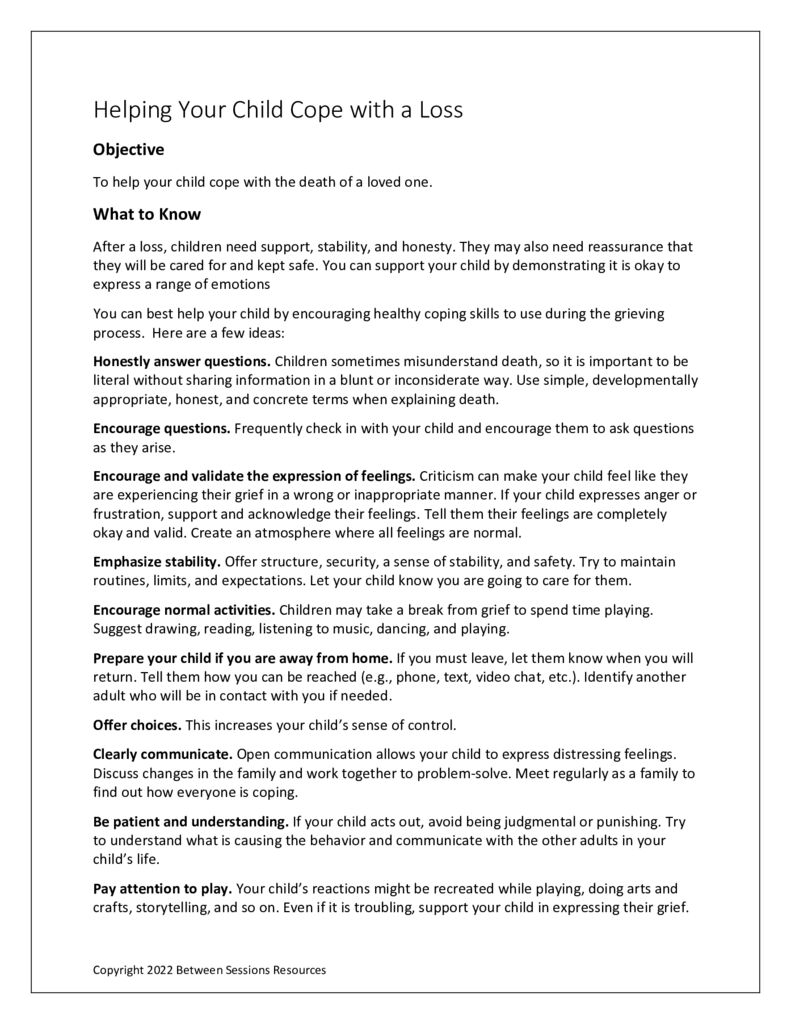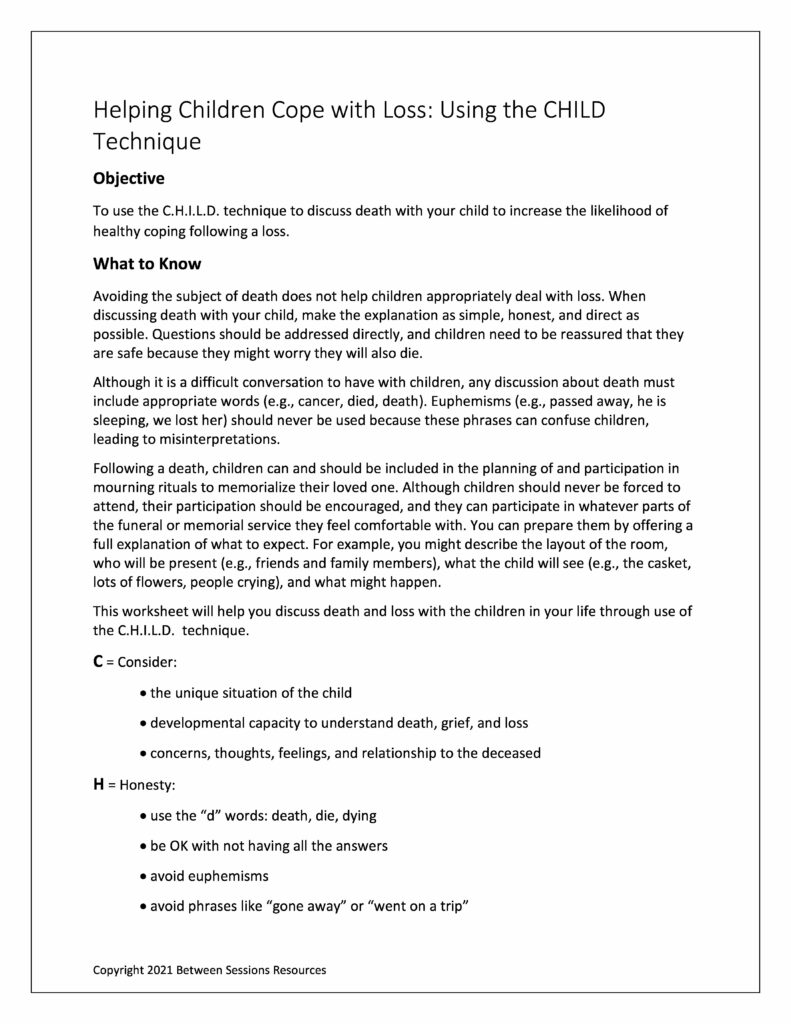It takes just a few minutes to assemble this full-size board game with complete decks of cards that encourage family communication, solving family problems, dealing with change, responsibilities in the family, and more. This game is for families with kids 5 and up. It includes “blank” cards Studies show that family meetings improve communication, diminish behavior problems, and help parents teach values to their kids. (1024. family therapy, communication)
Created by the National Alliance for Children’s Grief, this booklet gives adults guidance on how to talk to kids and teens following the death of a loved one. It includes guidance on subjects like viewing the body, explaining what happens to the body, and how to involve children and teens in end-of-life rituals and memorials. This is a thoughtful and comprehensive guide with links to a variety of other resources. (0724, death, grief, grieving, loss, healing)
Each note encourages children to use emotional and social skills to help them be more resilient in the face of everyday problems. On the back side of each note, parents can write personal words of encouragement. (1123. emotional intelligence, EQ, resilience, behavior)
Kids and teens can use this jar to express their feelings. (1023. emotional regulation, feelings, communication)
This 16-minute audio helps children learn the skill of visualization to relax when they are stressed or anxious. (0723, stress, anxiety, trauma, anger control)
This worksheet asks children to think about anything that makes them happy. (0723, depression, grief, healing)
This checklist can be used to keep track of symptoms that a child might be exhibiting due to trauma. The checklist asks a parent or caregiver to rate symptoms once a week on a 3-point scale. (0622, trauma, symptoms, PTSD, assessment)
This worksheet asks kids and teens to think about the problems, worries, and upsetting emotions that are “weighing them down.” It uses the metaphor of a Problem Background to help kids and teens identify the thoughts and feelings that are causing them problems and how to let them go. (0622 , depression, anxiety)
This worksheet is designed to give parents an overview of things they should do, and not do, in helping their children cope with a significant loss. It includes a family drawing activity to children talk about their feelings. (0322, loss, grief, mourning)
This worksheet encourages adults to follow the CHILD technique to help children who have experienced a loss. The acronym stands for: Consider, Honesty, Involve, Listen, and Do It Again.



